How to Use Gouache Paint – An In-Depth Guide to Gouache Techniques
Gouache is not as well-known as other paints such as acrylic, watercolor, or oil but nonetheless, many artists choose gouache as their preferred medium. Gouache is loved by many artists because of its versatility as well as its ability to create paintings that are bright and luminous. Gouache is water-based and can easily be watered down or built up to create soft layers or build up texture. In this article, we talk about how to use gouache paint, so if you have ever wondered “what is gouache paint used for?” then read on to find out!
What Is Gouache Paint?
Gouache paint is similar to watercolor paint in that it is also mixed with water to alter the hue and vibrancy. They are both also applied similarly and have a similar composition. Gouache paint can be thought of as combining the qualities of watercolor paint with the qualities of acrylic paint.
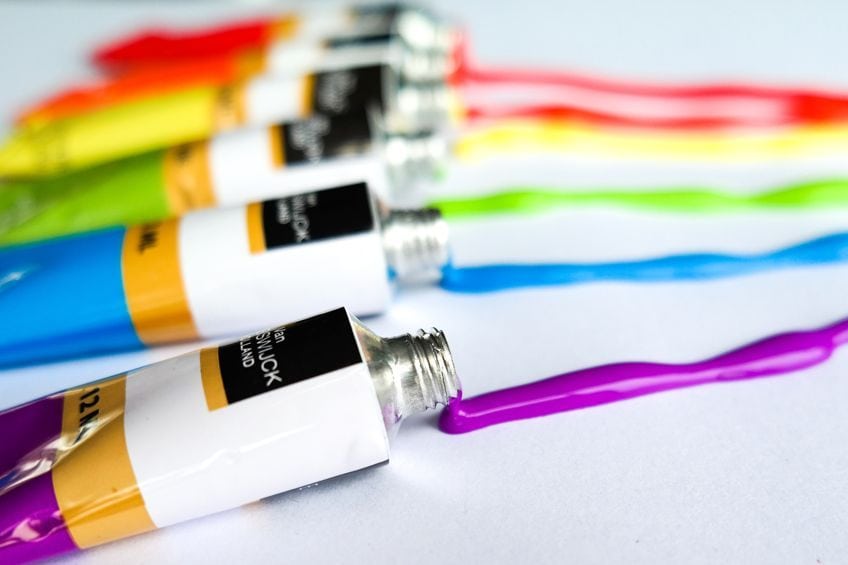
Gouache paint is quite thick and dries to an opaque, matte finish. Painting with gouache is very convenient because it dries quickly and doesn’t reflect light. This means that gouache does not require you to wait very long between applying each layer and that your final result will be quite vibrant. Gouache paint is made by mixing natural or synthetic pigments with water and gum arabic.
What Makes Gouache Different From Other Paints?
It may come as no surprise to you that gouache is different from other paints mainly by composition. As we mentioned above, gouache shares some qualities with both watercolor paints and acrylic paints, and in a way functions as something in-between the two.
Artists that choose to paint with gouache tend to do it because they like the techniques and effects of watercolor but want a vibrancy closer to that of acrylic.
What Is the Difference Between Acrylic Paint and Gouache?
Acrylic paint differs from gouache paint in that it is made with an acrylic polymer emulsion binder while gouache is made with gum arabic as its binder. This composition means that acrylic paint remains more flexible when dried. Acrylic paint is also thicker than gouache and is thus waterproof as well as more durable. If gouache is layered too thickly in an attempt to rival acrylic in this way it becomes prone to cracking.

On the other hand, gouache can be changed once it has dried. In other words, you can add water to dried gouache paint so that you can make adjustments or correct mistakes. This is something that you cannot do with acrylic paint. Acrylic paint is more forgiving in other ways, however, as it can be applied to many different surfaces with ease while gouache paint works best on watercolor paper, bristol paper, and illustration boards. Gouache, as mentioned above, dries only to a matte finish while acrylic paints can dry to various finishes including glossy, satin, or matte.
| Acrylic Paint | Gouache Paint | |
| Flexibility Once Dry | More flexible | Less flexible |
| Finish | Various finishes available | Dries to an opaque, matte finish |
| Surfaces Available for Use | Many surfaces are available such as canvas, paper, wood, fabric, leather, and more. | Works best on watercolor paper, bristol paper, and illustration boards |
| Ability to Correct Mistakes | Mistakes can be painted over at the cost of thickening the painting’s layers. | Mistakes can easily be corrected by adding water. |
| Thickness | Thick | Much Thinner |
| Durability | More durable | Less Durable |
| Vibrancy | Very vibrant | Quite vibrant |
What Is the Difference Between Watercolor Paint and Gouache?
Gouache has more pigment than watercolor paints which means that it is thicker, more opaque, and dries to a matte finish. Watercolor paints are thinner, less opaque, and have a more transparent finish. Gouache paint is essentially a heavier watercolor and tends to behave more predictably because of this. Both gouache and watercolor paints can be rewetted to make changes or correct errors. Gouache paints dry much faster than watercolor paints and will not look as transparent if watered down.
You can even use watercolor and gouache paints together by combining and layering them on your artwork.
| Watercolor Paint | Gouache Paint | |
| Thickness | Thinner | Thicker |
| Finish | Translucent | Opaque and matte |
| Surfaces Available for Use | Works best on watercolor paper, bristol paper, and illustration boards | Works best on watercolor paper, bristol paper, and illustration boards |
| Vibrancy | Less vibrant | More vibrant |
| Predictable | Can be unpredictable | More predictable behavior |
What Surfaces Can Gouache Paint Be Used On?
Gouache is a lovely and forgiving medium to work with and provides very vibrant and consistent results. Ideally, gouache should be used on papers such as watercolor paper or thicker drawing papers. Illustration boards can work very well with gouache paints too. Unfortunately, you would want to avoid attempting to use gouache anywhere else, at least in the beginning, as it may be hard to get the paint to sit on other surfaces.
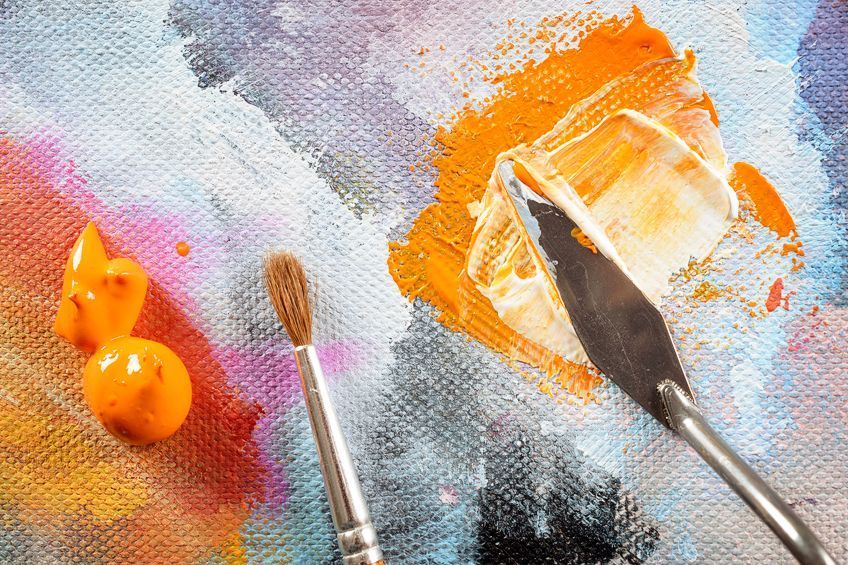
With that being said, some artists have had luck with using gouache paint on plastic, wax paper, and wood. Raw, untreated wood can accept gouache paint as it will be porous enough to accept the pigment. Try to use a wooden board that is smooth, even, and clean to ensure the best results. If you want to attempt using gouache on plastic or wax paper you can add a few drops of dish detergent to the gouache in your artist’s palette before applying it to your artwork.
If you try this method you can expect unpredictable or inconsistent results until you find a balance that works for you.
The Best Gouache Paint
We have chosen our favorite gouache paint on the market and spoken about it in more detail below. It has a few very slight downsides but overall, it is a very high-quality gouache set that will go above and beyond your expectations. Whether you are just starting out with gouache or are looking to play around with a new set of paint, read on below to see our top pick!
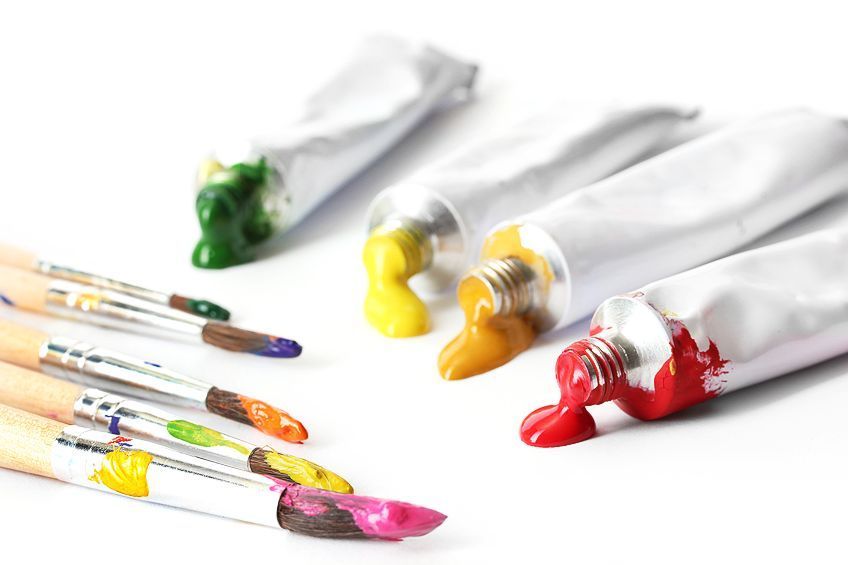
WINSOR & NEWTON Designers’ Gouache Introductory Paint Set
This set by renowned brand Winsor & Newton includes ten tubes of designer gouache colors. The colors included are Zinc White, Ultramarine, Primary Blue, Deep Spectrum Red, Primary Red, Primary Yellow, Permanent Yellow, Yellow Ochre, Forest Green, and Ivory Black. The opaque paints featured in this set use modern technology and advances in chemistry to deliver a high-quality range of beautifully pigmented gouache paints that are smooth, vibrant, and fast-drying.
The cutting-edge, professional formulation by Winsor & Newton results in great coverage that is coupled with fast and convenient color mixing. The set may be a bit pricey for some people, especially if just starting out, but high-quality supplies save both money and time in the long run.
- Opaque gouache set renowned for color brilliance and matt finish
- Introductory set ideal for designers and beginners alike
- Includes 6 primary colors in 14 ml (0.47 oz.) tubes
Winsor & Newton is a reputable and long-standing company that has been producing paints since 1935 and continues to uphold its reputation amongst the artists’ community to this day. We have chosen this introductory gouache paint set as our top suggestion because it is extremely easy to use. This designer’s range of gouache paints is used by professional and hobbyist illustrators and artists alike.
By drying to a matte finish the gouache paints in this set guarantee that there will be reduced reflection while photographing your completed piece. This can also be beneficial if you plan on framing your piece behind protective glass. Another great benefit is that these paints are suitable for artists looking to do portraiture, landscapes, marbling, calligraphy, and much more! This means that this set can be used to help you explore many new avenues of painting with ease.
[su_shadow style=”simple”][su_panel]PROS
- Lots of colors in a pack
- Beautifully pigmented
- Smooth and vibrant
- Fast-drying
- Suitable for beginners and professionals
- Made by a reputable manufacturer
- Non-reflective, matte finish
CONS
- Paint may dry faster than you are used to
- A bit expensive
- When first coming out of the tube, the consistency may be a little uneven
What Are the Different Gouache Techniques?
Since gouache paint is similar to watercolor paint in so many ways, the two mediums share a lot of the same techniques. We will talk about some of these gouache techniques in more detail below by talking about how to go about trying these techniques as well as what they can be used to create.
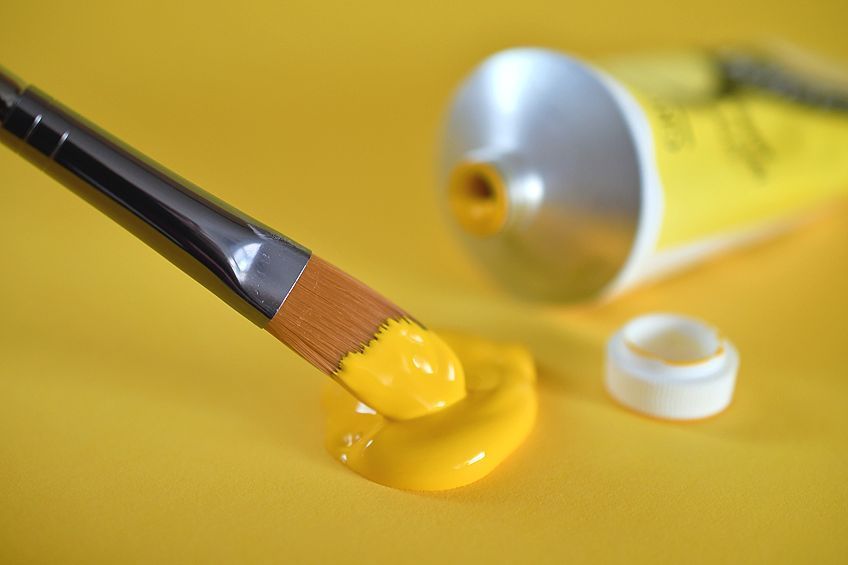
Creating Gradients
Gouache has a thick and creamy consistency that can be mixed directly onto your painting surface. What this means is that you can blend within the work and create subtle transitions in hue with very little effort. This is essential for creating realistic paintings. To experiment with creating gradients as one of your gouache techniques, you can apply two different colors on either side of a piece of paper with an open space in between the two. Next, you can gradually add a bit of each color to the other, blending them together until they meet.
As you get more comfortable with this you can try to add more colors next to each other and blend them as you move along. The goal is to create an ombre look on your artwork.
Blooms
Blooms are a simple and popular technique that results in abstract and irregular splotches of color. To create blooms, you will first make sure that your brush is wet with water and then add a bit of gouache. You then put this on your painting, and the result is that colors spread quickly around your painting.
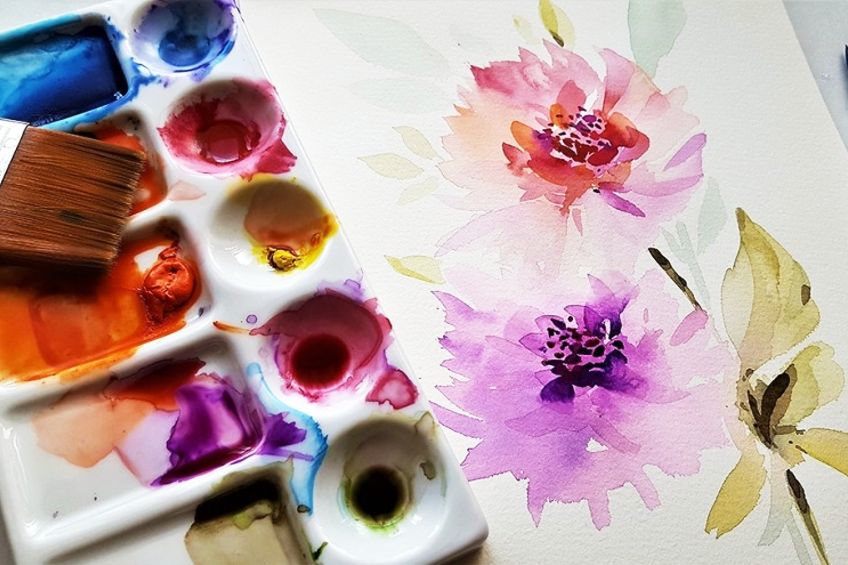
Creating Volume
You can create volume with gouache by making sure to place different values of a color in different areas of your painting in order to show where light is shining on particular objects. The more light touches an area of your object, the paler the color should be. Where there is no light touching your object, you will have a darker color value. When you first start trying to create volume as one of your gouache techniques, try thinking of it as creating a gradient of your chosen color from light to dark.
Consider how light falls on three-dimensional objects and paint accordingly.
Dry Brushing
To dry brush with gouache, add a small amount of gouache to the tip of your paint, and use a piece of tissue or scrap paper to remove any excess paint. You want just a little bit of paint on the paintbrush so that you can move the brush over the canvas to achieve a light, feathered effect on your painting. This gouache technique is used to create texture, highlights, and backgrounds and it is great for artists that enjoy painting natural scenes and landscapes.
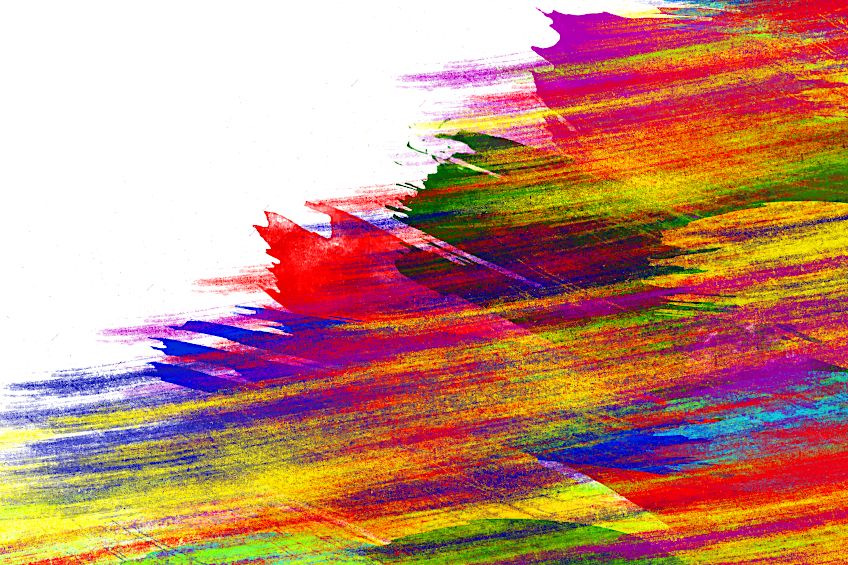
Lifting
Lifting is a technique used to remove gouache paint from paper or canvas if you have made a mistake or don’t like how it looks. You can lift gouache by wetting a sponge or a cloth with water and lightly blotting or dabbing the areas where you want to remove paint. When the paint becomes wet enough it will lift into the cloth or sponge and become visible there. At this point, you can wring out your blotting material and rinse it out.
Continue the process until the area is clear of paint.
Mixed Media
Using gouache for mixed media art means using gouache in conjunction with other art mediums such as watercolor, acrylic, pastel, ink, or charcoal. Gouache is great for mixed media art because it interacts well with many other mediums. Other mediums can provide different textures, effects, and vibrancy to a piece that can contrast and highlight the gouache. For example, lining a gouache painting with ink can give it a whole new level of dimension.
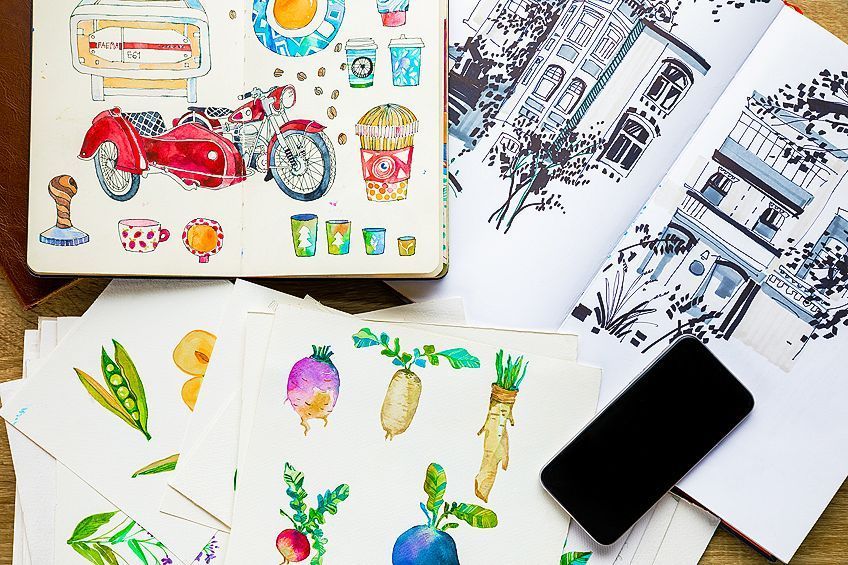
Glazing
Glazing is a technique used to create deep, moody shadows on a painting. To glaze with gouache, you will gradually mix water into your paint and thin it out. You can then layer it on top of areas that have already been painted and have dried. This method can enrich colors or even create new ones.
It’s a great way to create deep, dark shadows or help to set the tone for more atmospheric pieces.
Opaque Layers
Adding opaque layers helps to create dimension by showing that an object is at the forefront of your painting. To make an opaque layer with gouache paints simply add less water to your paint before putting it on your canvas. The rich color will then sit upon and completely cover the more translucent base or backgrounds layer to create depth and dimension on your artwork. This is a great technique for painting clouds onto a sky, trees on a mountain, or a person in front of a shrub.
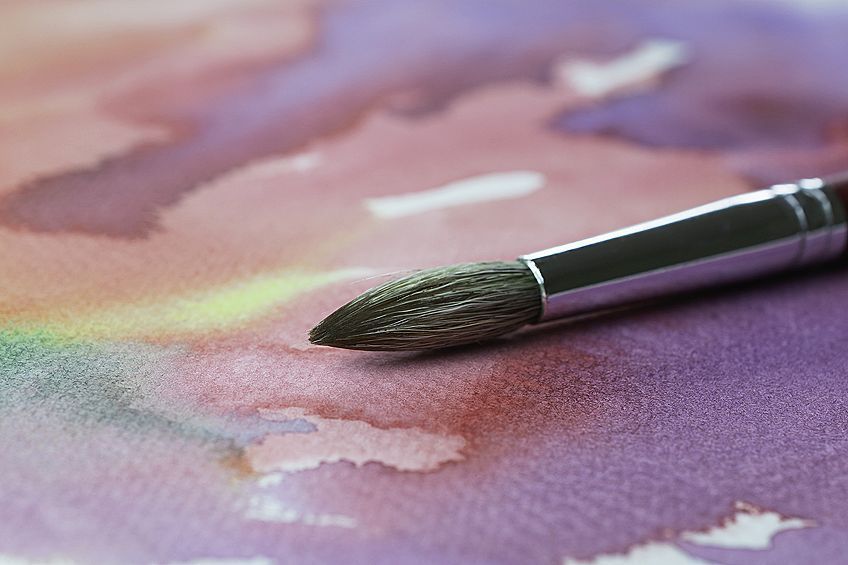
Reworking Dry Areas
Gouache dries fast and it can be an intimidating quality for many artists, but luckily there is a workaround to this. Once gouache has dried it still can be reworked by adding some water. Experiment with this by using some gouache paint to paint a solid shape on paper and allow it to dry. Next use a paintbrush dipped in water to paint along the edges of the shape.
As the paint becomes wet again you will be able to move and mix it around, softening the edges outwards as you like.
Staining
To start staining, simply add some gouache to your palette and mix it with water until you achieve a thin consistency. Once you are happy with the consistency and color of your stain then you simply spread it across your paper as desired. This area will serve as a foundation for the rest of the piece. Staining is used to cover a large area of a painting surface with a layer of paint. This is a good way to create large fields, tall mountain ranges, and atmospheric skies.

Wet on Dry
Wet on dry as a technique refers to using paint directly on a dry surface such as paper or canvas. Since gouache has a thick, creamy texture when undiluted with water it can be smoothly applied to a surface in this way.
If you want an application that is even more fluid then you would just mix it with water on your palette beforehand.
Wet on Wet
Wet on wet as a painting technique creates softer shapes that have blurred or indistinct lines and edges. To try using a wet-on-wet technique with gouache just dampen your paper and add wet gouache to it. This technique is good for adding backgrounds, bodies of water, and even abstract elements to your painting. It can also make your horizons and landscapes appear more atmospheric.
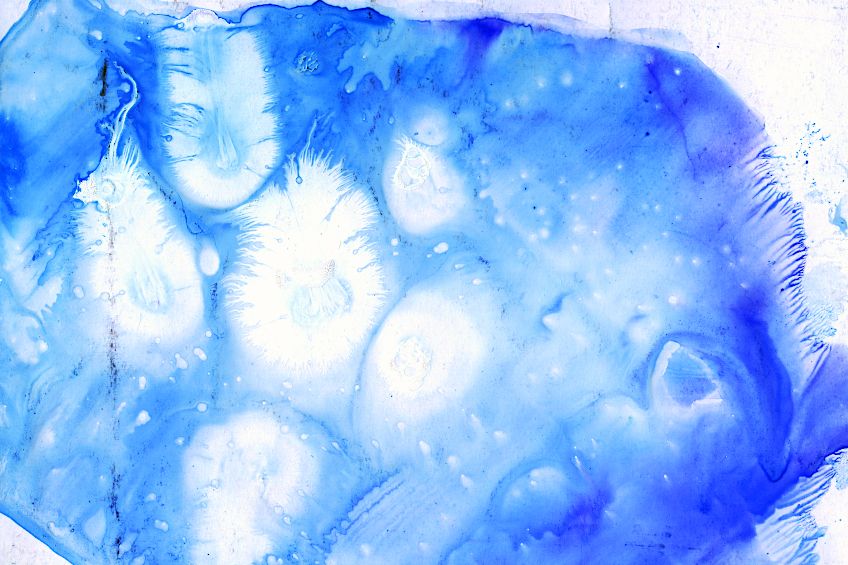
A Gouache Painting Tutorial
We have spoken about our choice for the best gouache set to purchase and discussed a few techniques that can be used while painting with gouache. If you like everything that you’ve read then we are now going to guide you through using gouache for the first time.

Supplies Needed to Work With Gouache Paint
If you paint regularly, you will already have a lot of the materials needed to paint with gouache, such as rags, paint brushes, and a palette. There are a few other things that you should consider buying but are in no way necessary. Whether you need certain materials or not will depend on your technique and experience.
We do, however, suggest using everything listed below as it will make the process of working with gouache for the first time easy and very enjoyable.
- Tarp or old newspapers
- Gouache paints
- Soft or medium synthetic paintbrushes
- Watercolor paper, Bristol paper, or illustration board
- Mixing tray or palette
- Water cup
- Rags or a towel
- Pencils or waterproof markers (optional)
- Gum arabic (optional)
- Water spray bottle (optional)
- White oil pastel (optional)
How to Use Gouache Paint: Step-by-Step Gouache Painting Tutorial
Now that you have become acquainted with what gouache paint is, and have learned a bit about the different techniques that can be used with gouache, we will be talking you through how to paint with gouache! Below we have outlined a comprehensive guide on how to paint with gouache so that you have no reason to worry while you let your creativity flow. Gouache is a truly beautiful and interesting medium to work with, and many artists find gouache quite fulfilling to work with.
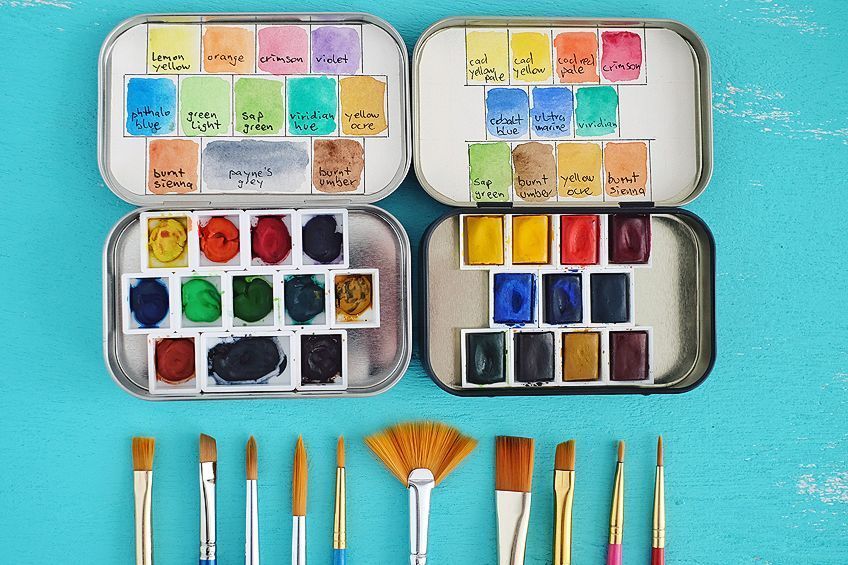
Set Up Your Workspace
Set up your workspace by laying down a tarp or old newspapers and keeping a clean cup of water nearby. Some artists prefer using dedicated or disposable cups to avoid having to later clean a cup used for drinking. The newspaper and tarp are to prevent getting paint on your belongings.
If you do somehow spill gouache paint somewhere, you can easily clean it with soapy water.
Plan Your Artwork
Lightly sketch your design on the paper or board using a pencil (optional). This is helpful because you can freely plan your drawing without the worry of trying to lift paint to fix a mistake. You can also use this time to color areas that you want to remain white with white oil pastel (optional). This works because oil deflects water.
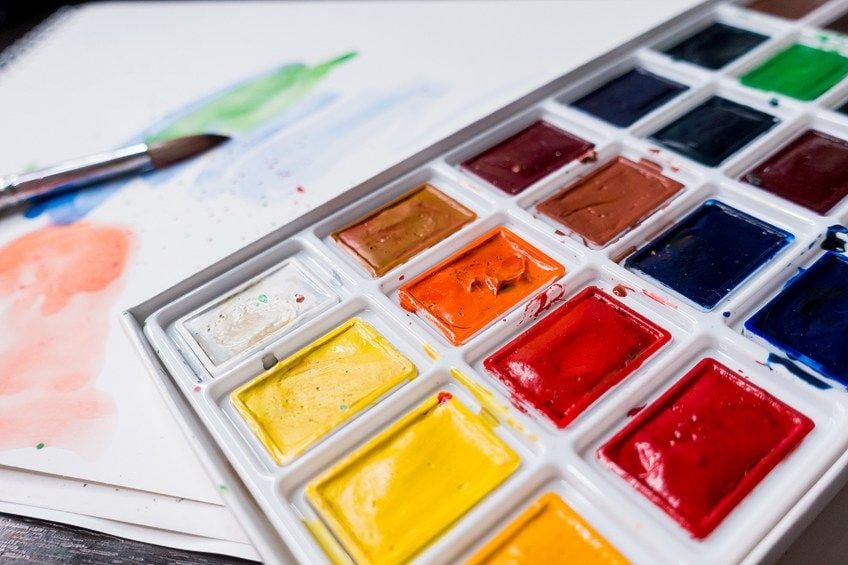
Meaning that the white pastel will stop the water-based gouache from penetrating into the paper in those areas. This is a useful technique for people that aren’t sure how to control the flow of watercolor or gouache paints yet and serves as a very helpful precautionary measure against unwanted paint bleeding on your paper.
Begin Mixing and Preparing Your Paints
Add the colors you plan on using to your palette. Squeeze out small amounts of all the paints you will be using. Mix colors on your palette to create the colors that you will be using in your painting. You can do this by adding two colors into one compartment of your palette and then mixing them with a brush. Make sure that you always clean your brush thoroughly before dipping it into another color.
Start slowly adding water to the paints you would like to be more opaque.
You must add water in small amounts and dilute the gouache gradually. It is much better to add too little water at a time than to add too much. If you over-dilute your gouache, you can add a few drops of gum arabic to the mixture to thicken it again. Gum arabic is the binder used in gouache paint that helps the pigment bind to the paper once the water has evaporated.
Test Your Colors
Consider testing your paints on a spare piece of paper before beginning your actual painting. This can help you get acquainted with your gouache paints, paintbrushes, as well as the surface you are painting on. Experiment with using less or more water, as well as with a dry or wet brush. Try using wet-on-wet techniques and practice glazes until you feel comfortable about getting started.
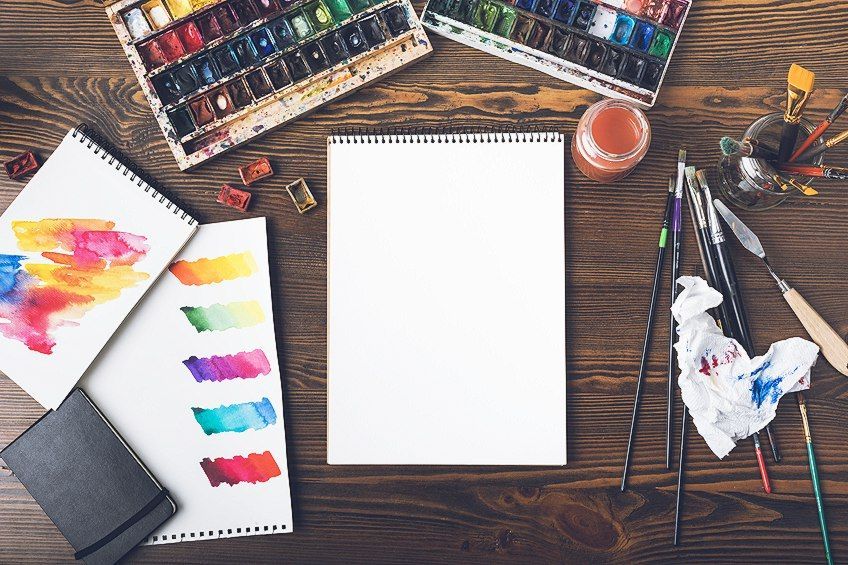
Start Painting Your Base
When you are ready to get started, begin by adding base colors and layers. This means painting the background of your piece. The background will usually be more translucent than the layers that follow it. This does not have to be the case, however, and you can feel free to try experimenting with what you would like to do. Using thin layers and not using too many layers of gouache is ideal because gouache has a tendency to crack when applied too thickly.
Once the first layer has dried, you can work your way to the foreground and begin adding more details.
You must allow the paint to dry properly so that you can avoid unwanted mixing at this point. Some artists that have experience with this medium will know how to account for this but if you are just starting it is best to wait for it to dry. If you begin painting on a layer you thought was dry and your colors start to bleed, simply stop painting and go back to paint over the area once time has passed and the area has dried properly.
Don’t Allow Your Paints to Dry Up in Your Palette
If at any point you notice that your gouache is drying on your palette, lightly mist them with the water in your spray bottle (optional). Don’t allow the water to pool up on the gouache as the goal is to just keep them moist, not to water them down.

Begin Shading and Adding Detail to Your Artwork
Add shading to the painting to introduce some dimension to your piece. There are several ways to shade but the most popular methods are using a glaze or creating a gradient. Add details using a fine-tipped brush dipped in black gouache or by using a waterproof marker/pen. Linework can really make a design stand out and add even more dimension to a painting.
The linework can be solid or sparse throughout a piece, experiment to see what feels right and looks good to you.
Let Your Painting Dry
Allow your piece to dry properly and make sure that you are happy with it. Gouache can dry to a different color so before you consider your piece to be complete you should allow it to dry. If you see any mistakes, you can simply rewet the area and fix the mistake, paint over it to cover up the mistake or you could lift the paint and try again completely. Use your rags, towel, or sponge to lift paint off the canvas to correct any errors.
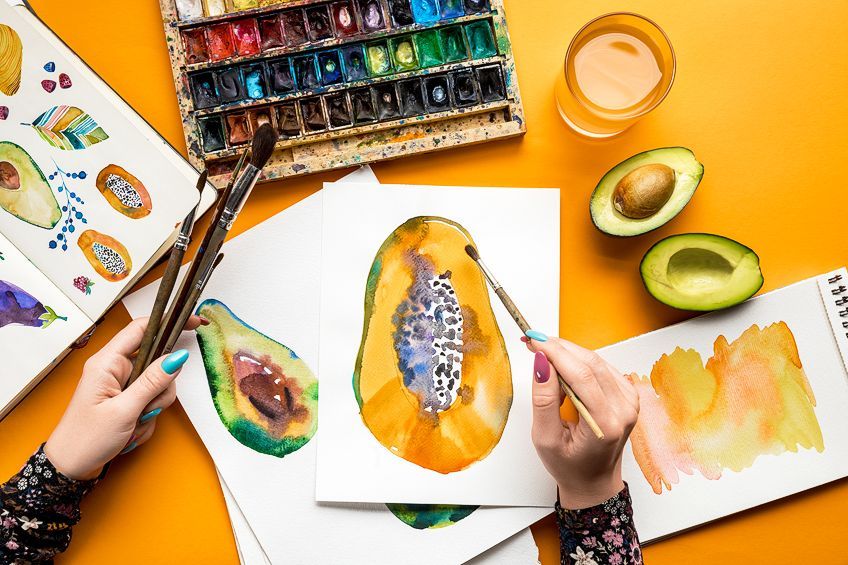
Frame and Display Your Completed Painting
Once you are sure you are happy with your piece you can frame it behind glass to keep it safe. Make sure that you properly mount a painting before framing so that it doesn’t make contact with the glass. If your painting makes contact with the glass, it can cause condensation, paint smudging or bleeding, and even mold growth on the surface of your artwork. Some artists like to varnish their paintings but it can drastically alter the colors of your gouache painting in a way that doesn’t happen with other mediums.
Unless you are willing to risk ruining your painting it is best to avoid using varnish to seal gouache artworks.
Important Tips for Working With Gouache
We have covered quite a lot about gouache in this article but some of the advice is very important to remember, especially if you are just starting out. The most important tips to take away from this article once you begin working with gouache is as follows:
- Keep your brush clean while transitioning between paints. Make sure to properly clean your brushes as you switch to different colors so that you don’t end up with muddy colors by the end of your painting session. Do this by properly swishing your brush around in clean water to rinse off any gouache paint and then gently pinching it between a cloth or rag. Repeat the process until the brush is free of paint.
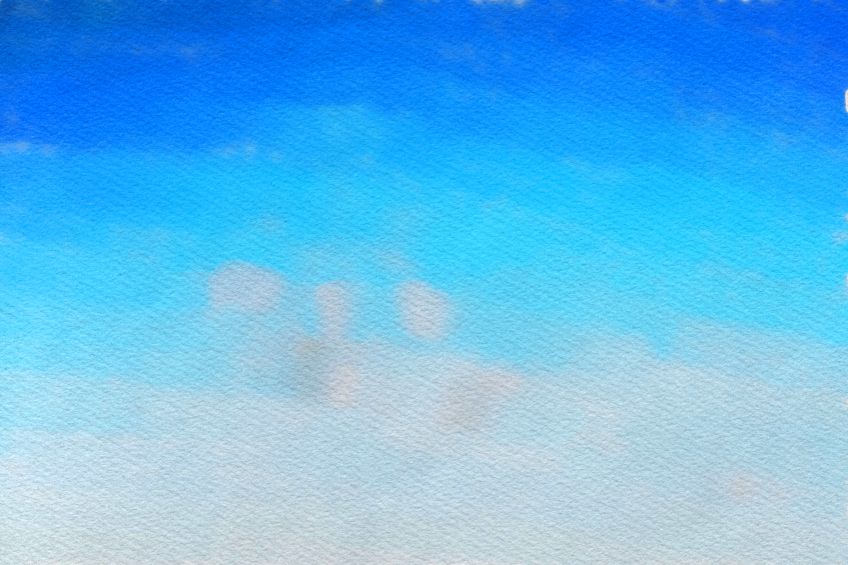
- Keep an eye on your palette while you paint to make sure that your gouache is not drying out on the palette. If the gouache is drying then you can lightly mist the paint to get it wet.
- Avoid applying gouache too thickly or in too many layers as you work so that you can avoid cracking and peeling once dry.
- Consider practicing with gouache before committing to a serious piece. Allow yourself time to get comfortable with the medium.
What Is Gouache Paint Used For?
Now that you know what gouache paint is as well as how to use gouache paint, you could be wondering “what is gouache paint used for?” Gouache is used by hobbyists and commercial artists of all skill levels to create illustrations, paintings, comics, calligraphy, and more.
You can do so much with gouache paint that if you are wondering “what is gouache paint used for?” then a better question would be to ask what it isn’t used for.
Gouache Painting Ideas
Gouache paints can be used to create landscapes, abstract works, portraits, botanical illustrations, still lifes, and much more. Their versatility makes them a go-to for all kinds of artists that prefer a wide variety of different subjects. Some people use gouache to paint depictions that are grounded in reality while other artists let the paints flow more freely to create abstract works of art. You could try painting a pet, a sunset, a mountain, a fruit bowl or even a loved one if you find yourself stuck while searching for gouache painting ideas.

We hope that this gouache painting tutorial has explained everything you wanted to know about gouache painting. Gouache is an extremely versatile medium that is known for its versatility and range of beautiful techniques that showcase its beauty. Many artists fall in love with gouache once they give it a try. So, the next time you are thinking of a new project to start or a new medium to try, why not give some of our gouache painting ideas a try?
Frequently Asked Questions
Is Gouache Paint Toxic?
Gouache paint is not toxic, but should not be deliberately ingested or applied directly to the skin or eyes. This is because it can still cause irritation or other unpleasant side effects. As with any substance, it is best to keep it out of reach of children and pets and to avoid unnecessary or excessive contact with your skin, eyes, mouth, or nose.
Should I Do Linework Before or After I Paint With Gouache?
You can do linework before you paint with gouache if you prefer, as long as you are using a waterproof marker to do it. Alternatively, you could start with a black gouache outline and allow it to dry properly so that it doesn’t lift and bleed when you come back to fill it in.
Can Gouache Paint Dry Out and Be Used Again?
If your gouache dries out in your palette you can scrape chunks of the paint out and grind it down with a pestle and mortar. Once the dried paint has been ground to a fine powder you can gradually add water until you reach the desired consistency of revived gouache paint.
What Brushes Are Good for Gouache?
Any brushes work with gouache so you are free to experiment with synthetic and natural hair brushes of all different textures and thicknesses. We do suggest, however, that you try starting with soft to medium bristled synthetic brushes as they tend to hold less water. This quality can help people who are just getting started with gouache paints and make the learning curve a bit easier to get past.
Is Gouache Bad for the Environment?
No, gouache paints are not bad for the environment. Gouache is made with non-toxic binders that do not harm the environment or your health. Overall gouache is very eco-friendly and because it is water-soluble it does not require harsh chemicals when being cleaned off of brushes or surfaces.
In 2005, Charlene completed her Wellness Diplomas in Therapeutic Aromatherapy and Reflexology from the International School of Reflexology and Meridian Therapy. She worked for a company offering corporate wellness programs for a couple of years, before opening up her own therapy practice. It was in 2015 that a friend, who was a digital marketer, asked her to join her company as a content creator, and this is where she found her excitement for writing.
Since joining the content writing world, she has gained a lot of experience over the years writing on a diverse selection of topics, from beauty, health, wellness, travel, and more. Due to various circumstances, she had to close her therapy practice and is now a full-time freelance writer. Being a creative person, she could not pass up the opportunity to contribute to the Art in Context team, where is was in her element, writing about a variety of art and craft topics. Contributing articles for over three years now, her knowledge in this area has grown, and she has gotten to explore her creativity and improve her research and writing skills.
Charlene Lewis has been working for artincontext.org since the relaunch in 2020. She is an experienced writer and mainly focuses on the topics of color theory, painting and drawing.
Learn more about Charlene Lewis and the Art in Context Team.








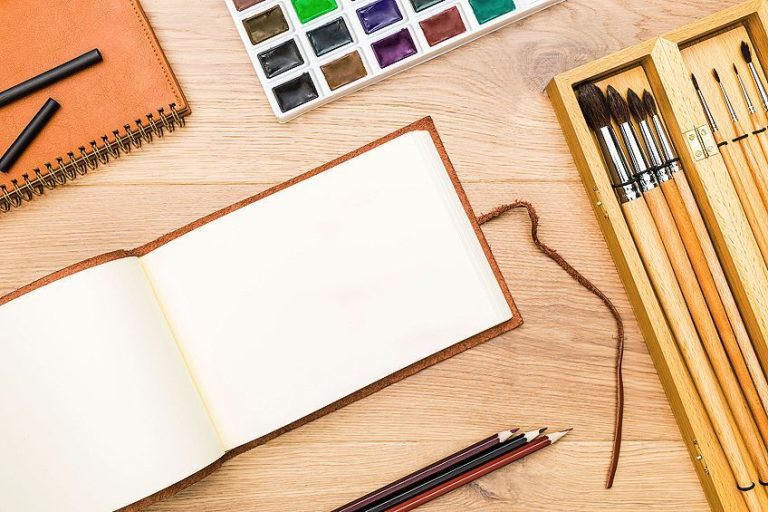
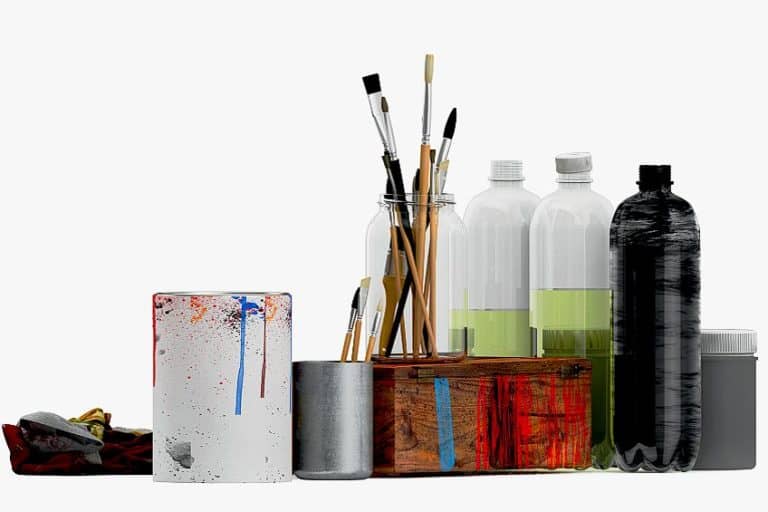

Excellent work, I have never used gauche paint but after reading this article I most surly will be doing so. Thank you.